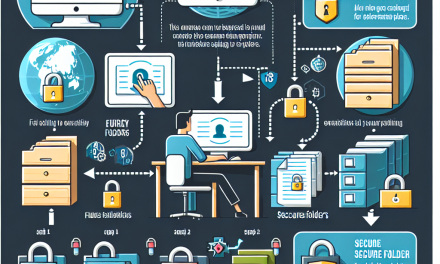In today’s rapidly evolving cybersecurity landscape, patch management has become a crucial aspect of system administration, particularly for enterprises relying on Windows Server environments. Ensuring that systems are up to date with the latest security patches is vital to mitigate vulnerabilities and protect sensitive data. In this article, we will explore various patch management tools available for Windows Server, as well as best practices for implementing an effective patch management strategy.
Understanding Patch Management
Patch management refers to the process of acquiring, testing, and installing multiple patches (code changes) on existing software installations. In the context of Windows Server, patches often address security vulnerabilities, bug fixes, and performance improvements released by Microsoft.
Why is Patch Management Important?
- Security Vulnerabilities: Cybercriminals frequently exploit known vulnerabilities in software. Regularly applying patches helps protect against these threats.
- Compliance Requirements: Many industries are subject to regulatory standards (such as GDPR, HIPAA, and PCI-DSS) that require organizations to maintain secure systems.
- System Stability: Updates can improve the overall performance and stability of Windows Server environments, reducing downtime caused by failures.
Common Windows Server Patch Management Tools
Here we explore some of the most effective patch management tools for Windows Server:
1. Windows Server Update Services (WSUS)
Overview: WSUS allows IT administrators to manage the distribution of updates released through Microsoft Update to computers in a corporate environment.
Key Features:
- Centralized control over the update process for Windows operating systems and applications.
- Customizable update scheduling to minimize disruption.
- Reporting capabilities to monitor deployment status.
Benefits: WSUS is a free tool provided by Microsoft, making it an accessible choice for organizations using Windows Server.
2. System Center Configuration Manager (SCCM)
Overview: SCCM is a powerful systems management tool that helps manage a large number of computers and applications, including patch management.
Key Features:
- Comprehensive patch management for both operating systems and third-party applications.
- Integration with WSUS for streamlined update distribution.
- Advanced reporting and compliance tracking features.
Benefits: SCCM is suitable for larger enterprises needing robust management and reporting features, allowing for a detailed view of system compliance.
3. Microsoft Endpoint Manager (Intune)
Overview: Intune is a cloud-based service that focuses on mobile device management and application management. It can also be used for patch management for Windows devices.
Key Features:
- Supports patch management in a modern hybrid IT environment.
- Enables setting deployment schedules and managing device compliance.
- Integration with Azure Active Directory for secure access.
Benefits: Ideal for organizations moving toward cloud-based solutions, enabling seamless updates across devices regardless of location.
4. PDQ Deploy
Overview: PDQ Deploy is a third-party tool that allows for software deployment and patch management across a range of systems, including those running Windows Server.
Key Features:
- User-friendly interface with predefined packages for common applications.
- Scheduling and real-time reporting on deployment status.
- Ability to create custom scripts for specific deployment needs.
Benefits: PDQ Deploy is particularly useful for smaller teams looking for an efficient, straightforward tool without complex configurations.
5. ManageEngine Patch Manager Plus
Overview: This tool offers automated patch management for both Windows and third-party applications.
Key Features:
- Automated patch scans and deployment capabilities.
- Patch approval workflows and detailed compliance reporting.
- Ability to create custom patch management schedules.
Benefits: It combines functionality for both Windows and non-Windows applications, making it a versatile choice.
Best Practices for Effective Patch Management
To optimize the patch management process in your Windows Server environment, consider implementing these best practices:
- Regular Assessments: Conduct vulnerability assessments to identify systems and applications that need updates.
- Prioritize Critical Updates: Focus on patches that address critical vulnerabilities or those that have been actively exploited.
- Testing Before Deployment: Always test patches in a controlled environment before rolling them out to production systems.
- Create a Patch Management Policy: Document your patch management process, including timelines for review, deployment, and rollback procedures.
- Monitor and Audit: Regularly review patch management reports to track compliance and identify any systems that may have missed critical updates.
Conclusion
Patch management is a fundamental aspect of maintaining security and stability within Windows Server environments. By utilizing the right tools, such as WSUS, SCCM, Intune, PDQ Deploy, and ManageEngine Patch Manager Plus, organizations can ensure their systems remain secure against emerging threats. Coupled with best practices and a proactive approach to vulnerability management, businesses can significantly enhance their overall security posture.
For WafaTech readers looking to fortify their environments, implementing a comprehensive patch management strategy is a crucial step in safeguarding their digital assets.





